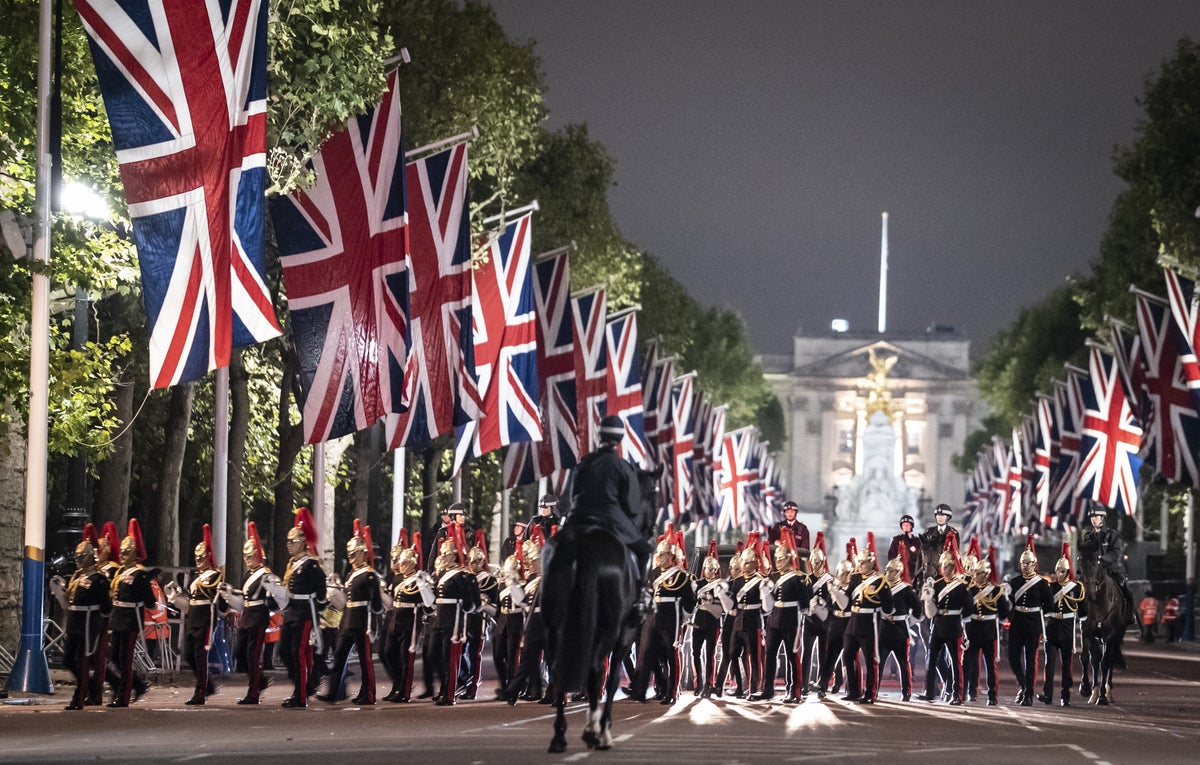
The Queen will lie in state in London ahead of her funeral.
Here is some of the information mourners need to know.
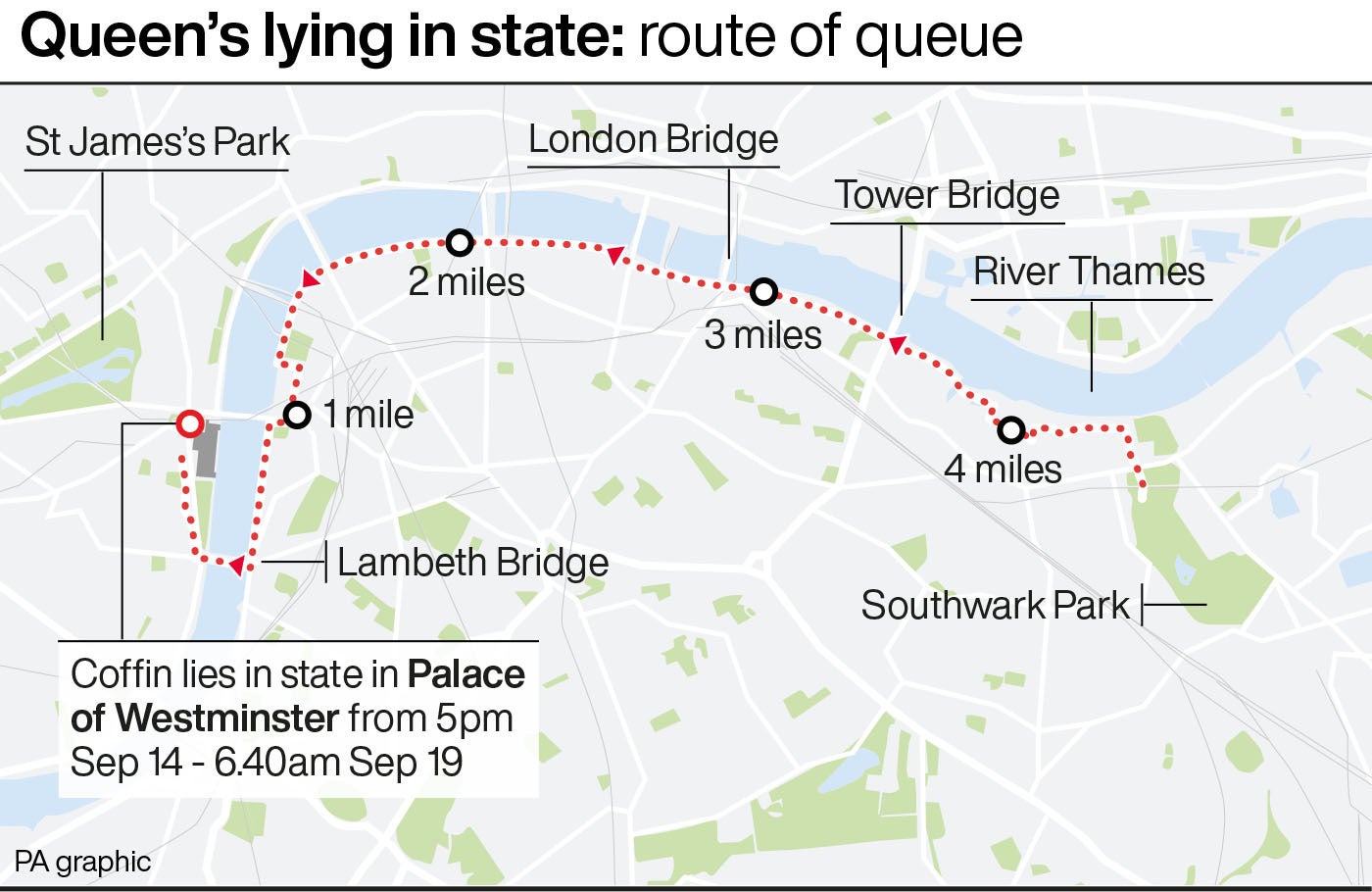
– What exactly is meant by the term ‘lying in state’?
Lying in state is usually reserved for sovereigns, current or past queen consorts, and sometimes former prime ministers.
During the formal occasion, the closed coffin is placed on view, as thousands of people queue to file past and pay their respects.
The coffin will be adorned with the Imperial State Crown, the Orb and the Sceptre.
– When and where will the Queen lie in state?
The late monarch’s lying in state in Westminster Hall opens to the public at 5pm on Wednesday and it will be open 24 hours a day until it closes at 6.30am on September 19 – the day of the Queen’s funeral.
– Where is Westminster Hall?
Westminster Hall, which dates back to 1099, is in the Palace of Westminster and is the oldest building on the parliamentary estate.
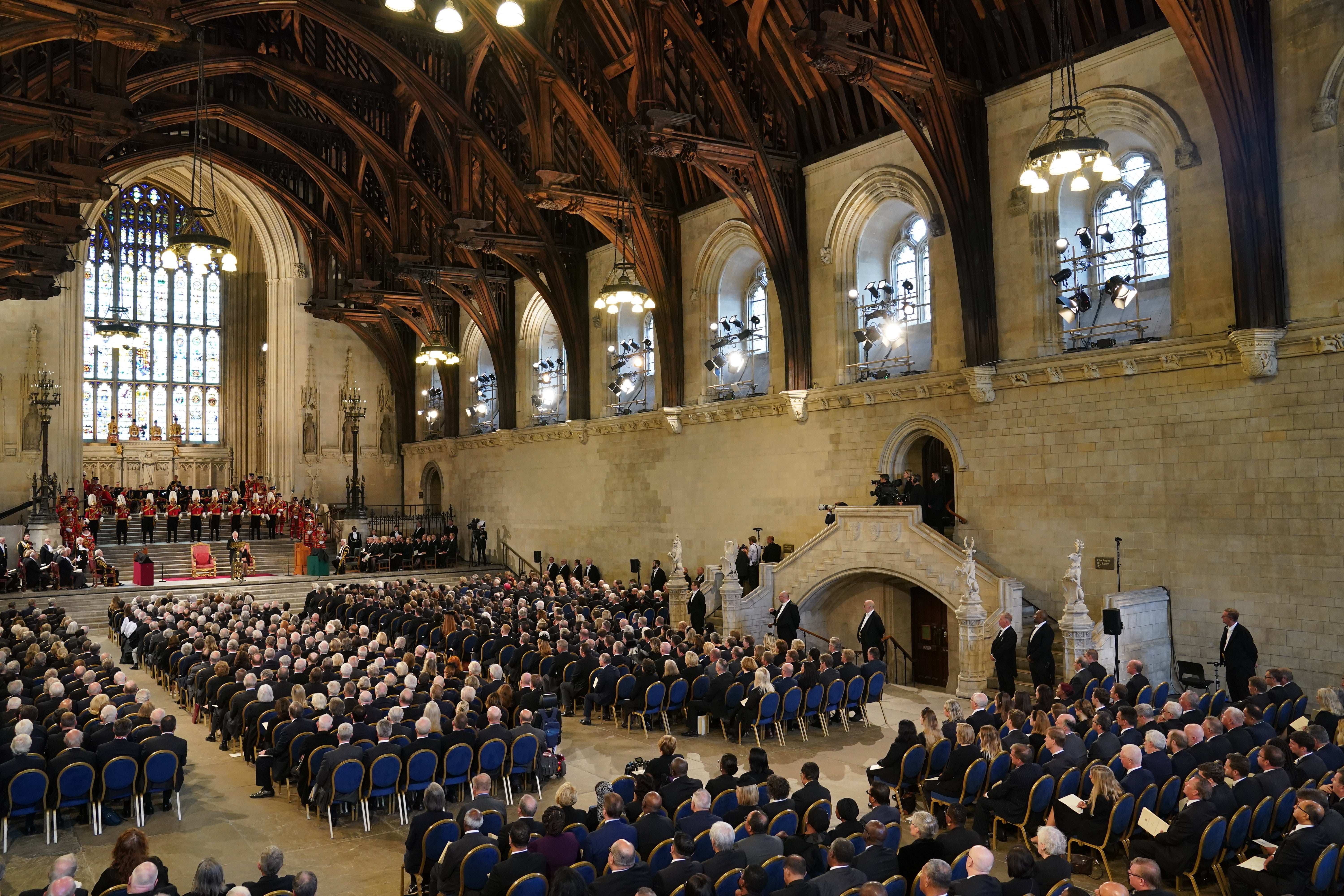
It forms part of the Westminster Unesco World Heritage Site and the UK Parliament website refers to its “great size”, the “magnificence” of its roof, and its central role in British history.
The building has been the site of key events, such as the trial of Charles I, coronation banquets, and addresses by world leaders.
– Will there be a queue?
Yes. Government guidance says there will be a queue which is expected to be very long, predicted to be in the tens of thousands.
People will need to stand for “many hours, possibly overnight”, with very little opportunity to sit down as the queue will be continuously moving.
As large crowds are expected, there are likely to be road closures and delays on public transport.
People will not be allowed to camp and a wristband system will be used to manage the queue, with those waiting in line given a coloured and numbered one, specific to each person, allowing them to leave for a short period.
“Your wristband also allows you to leave the queue for a short period to use a toilet or get refreshments, then return to your place in the queue,” according to the official guidance.
– What will the queue route be?
Plans are for members of the public to join the line on the Albert Embankment, which will run behind the London Eye onto the Southbank before following the river past landmarks such as the National Theatre, the Tate Modern and HMS Belfast, reaching “maximum capacity” at Southwark Park.
– Will there be assistance for people who cannot queue for long periods of time?
The main queue has step-free access with a separate accessible route also planned to run from Tate Britain where timed entry slots will be issued for a queue going along Millbank to the Palace of Westminster.
Guide dogs will be allowed inside Westminster Hall, with sign language interpreters also on hand.
Venues including the Southbank Centre, the National Theatre and Shakespeare’s Globe will open for longer hours to accommodate those queuing.
The British Film Institute on the Southbank will do the same while providing an outdoor screen with archive footage of the Queen.
The Prime Minister’s official spokesman said: “A lot of people understandably will want to see the lying in state and we will do everything possible to facilitate as many people as possible, including those who may not be physically able to wait that long, because of disabilities, for example.”
– Will security be tight?
Under the arrangements, once mourners have passed through the Albert Embankment they will be directed across Lambeth Bridge and through airport-style security before entering the Palace of Westminster.
There are tight restrictions on what you can take in, with people allowed just one small bag with one simple opening or zip.
The line will be managed by more than 1,000 volunteers, stewards and police officers.
St John Ambulance members will also be stationed along the route, while more than one hundred Scouts aged between 18 and 25 will join volunteers from the charity Samaritans to offer help.
– What else will be set up along the queue route?
Portaloos and crowd control infrastructure such as barriers and temporary flooring have been set up inside Victoria Tower Gardens.
A marquee and armed police have been seen at the entrance to Cornwall Gardens, with several police and emergency service vehicles parked across the road.
Lambeth Palace is also expected to arrange a multi-faith pastor service to provide support to those who need it.
Chaplains will be engaging with the crowd during daylight hours.
Identified by hi-vis vests which have Faith Team printed on them, the chaplains will move along with the crowd, introduce themselves, have conversations and if requested, pray with people.
– Is there anything I need to bring?
Official guidance suggests that people should bring suitable clothing for the weather, food and drinks to have while queueing, a portable power bank for your mobile phone and any essential medication.
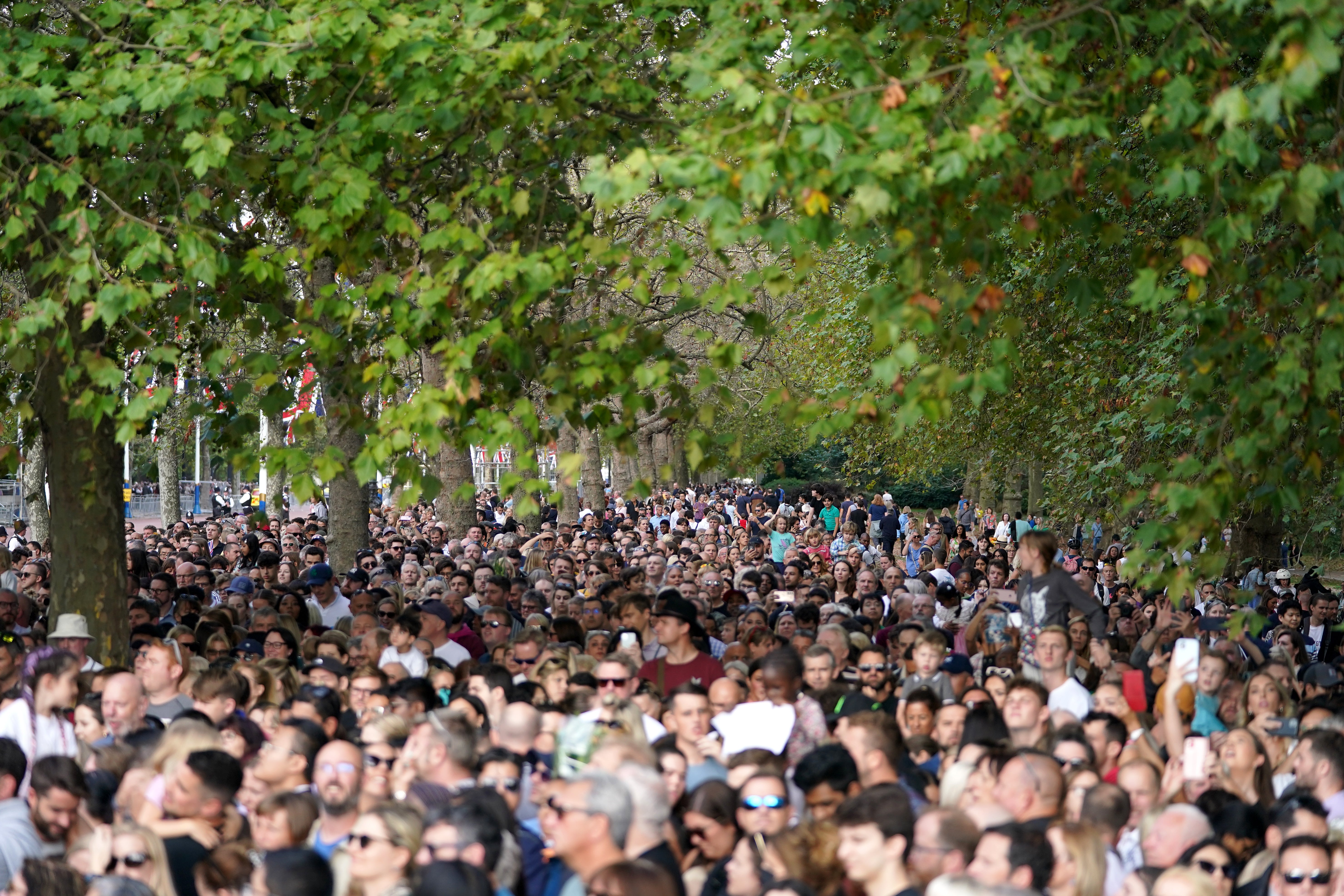
People are also advised to dress appropriately for the occasion.
– How will travel be affected?
London Underground passengers are urged to avoid Green Park station if possible due to high numbers of travellers passing through.
Other nearby options include Victoria, Piccadilly Circus and St James’s Park.
A special service will run on the Elizabeth line railway between London’s Paddington and Abbey Wood on Sunday to ease the pressure on other parts of the transport network.
– Are any items banned?
Yes. There is a list of banned items which includes flowers or other tribute items, including candles, soft toys, and photographs.
Other banned items include banners, flags, hampers, blankets and folding chairs.
The Government guidance says people should not film, photograph, use mobile phones or other handheld devices in the security search area or within the Palace of Westminster.
– Will there be somewhere to store larger bags?
A bag drop facility is available but capacity is limited, and there is no guarantee that there will be space at the facility.
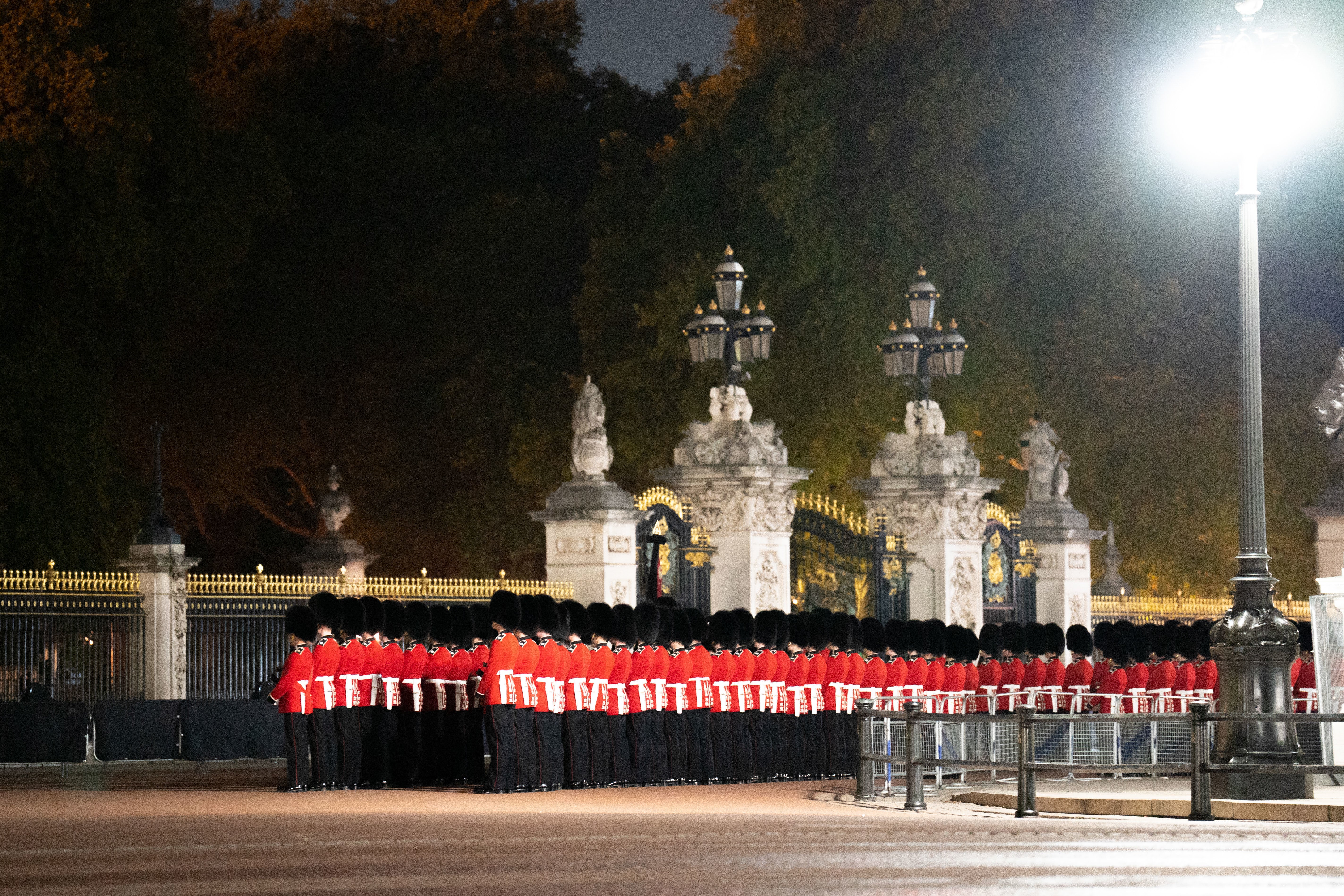
Waiting for bag storage space to become available will increase your queuing time.
– What can people expect to see?
The closed coffin will be draped in a royal flag, usually a personal standard, and will rest on a raised platform called a catafalque, flanked by a military guard around the clock.
A priceless crown and other regalia are traditionally placed on top of a sovereign’s coffin.
Each corner of the platform is watched 24 hours a day by units from the Sovereign’s Bodyguard, Foot Guards or the Household Cavalry Mounted Regiment.
– Will the royal family be there?
It is likely that the Queen’s children or even grandchildren will honour her with a vigil and join the guard over the coffin at some point – a tradition which has been called the Vigil of the Princes.
– Did the Duke of Edinburgh lie in state?
No, he did not, and this was in accordance with his wishes, but his death took place during the Covid-19 crisis and at that point such mass gatherings were also against the law.
– Who was the last person to lie in state?
The last person to lie in state in the UK was the Queen Mother in 2002.
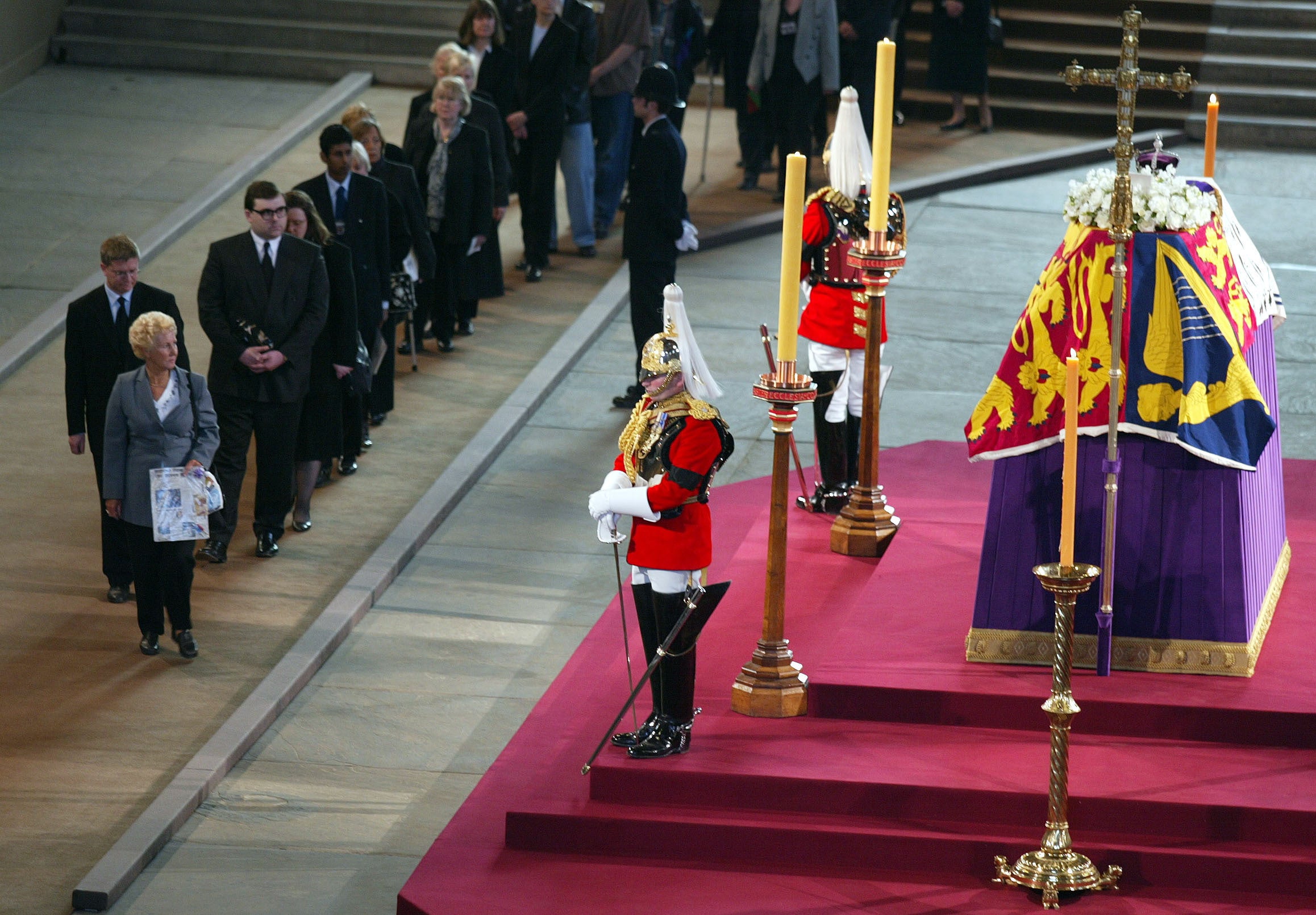
On top of her coffin in Westminster Hall was her coronation crown, set with the Koh-i-Noor diamond, and a hand-written message from her daughter, the Queen, reading: “In loving memory, Lilibet.”
An estimated 200,000 people turned out to pay their respects over three days.
– Was there anything unusual about that occasion in 2002?
It was the first lying in state where members of the public were subjected to a security check, which slowed the movement of the mourners.
At their longest, queues stretched across Lambeth Bridge and all the way along the South Bank to Southwark Cathedral, with people being warned to expect a wait of up to 12 hours at peak times.
Police were drafted in to deal with the security, large crowds and road closures.
– Where does the tradition originate?
The tradition of lying in state stretches back to the 17th century when Stuart sovereigns lay in state for a number of days.
Edward VII set the modern tradition of royal lying in state in Westminster Hall.
He lay in state in 1910, as did King George V in 1936 and King George VI in 1952.
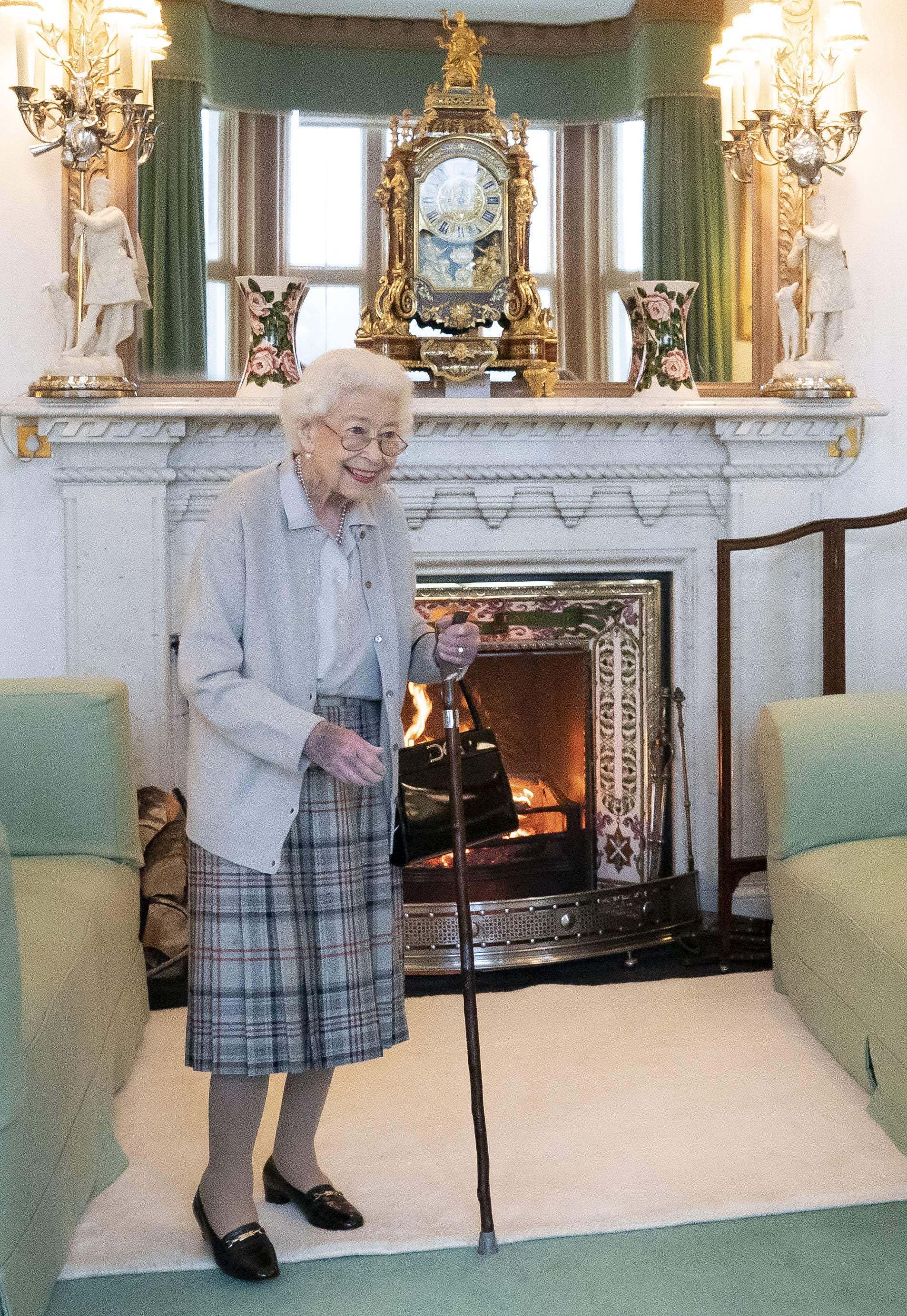
George VI – the Queen’s father – was the last sovereign before Elizabeth II to die.
– Who else lay in state in Westminster Hall?
Two prime ministers – William Gladstone in 1898 and Sir Winston Churchill in 1965 – also lay in state at Westminster Hall, attracting hundreds of thousands of people.
In 1930, there was an unusual lying in state in Westminster Hall for the victims of the R101 Airship disaster.
The experimental rigid British airship caught fire as it crossed northern France, killing 48 of the 54 people on board.







